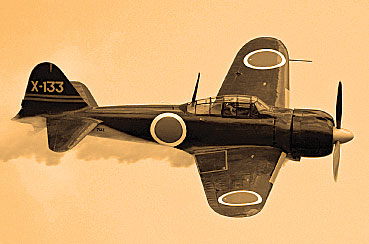INDIAN ARMED FORCES CHIEFS ON
OUR RELENTLESS AND FOCUSED PUBLISHING EFFORTS

SP Guide Publications puts forth a well compiled articulation of issues, pursuits and accomplishments of the Indian Army, over the years

I am confident that SP Guide Publications would continue to inform, inspire and influence.

My compliments to SP Guide Publications for informative and credible reportage on contemporary aerospace issues over the past six decades.
Mitsubishi A6M Zero – Japan’s Jewel
Japan used the Zero fighter aircraft from the day it entered the War till the day it announced its unconditional surrender on August 15, 1945

On December 7, 1941, the Imperial Japanese Navy launched 353 aircraft from six carriers in a surprise attack against the United States (US) naval base at Pearl Harbour triggering America’s entry into the Second World War. Various types of aircraft participated in the raid including the Mitsubishi A6M “Zero”.
If there was one aircraft that symbolised Japan’s capability for air operations during the War, it was the A6M Zero. The first flight of this single engine fighter manufactured by the Mitsubishi Aircraft Company happened on April 01, 1939. It entered service with the Imperial Japanese Navy Air Service (IJNAS) on July 01, 1940 and tasted blood for the first time against the poorly equipped Chinese Nationalist Air Force. The Zero quickly gained the reputation of being the most capable carrierbased fighter in the world. Its range of over 2,600 kilometres enabled it to reach so many different targets that the Americans, whose reporting name for it was “Zeke”, greatly overestimated its total numbers. It operated mainly from the aircraft carriers of the IJNAS, but many Zeros were also deployed on land. It is probably unique in the history of maritime aviation as a carrierborne fighter aircraft that proved superior in combat against most contemporary land-based fighters.
For several months after Pearl Harbour, the Zero reigned supreme in the Pacific theatre. Its combination of unmatched manoeuvrability and excellent firepower made it the scourge of the Allies. It won one air engagement after another. Even the British Supermarine Spitfire that had made short work of the German and Italian fighter aircraft, found the Zero a fearsome opponent. The Zero could comfortably out-turn the Spitfire and could remain airborne three times as long as the British fighter.
What accounted for the Zero’s performance? It was a very light fighter built of a new lightweight aluminium alloy called extra super duralumin. Its weight saving measures bordered on the extreme. Unlike many aircraft of the time, it had no armour protection for the pilot, engine or other critical aircraft parts. Some pilots even dispensed with the parachute. Among the many single-engine fighters that operated during the War, the Zero was the unrivalled long-range champion. It also had a very low stalling speed of below 60 knots that made it a winner in manoeuvring during combat. However, the lack of selfsealing fuel tanks and armour plating, made it extremely prone to catching fire and exploding when struck by enemy bullets.
In the middle of 1942, the Americans managed to lay their hands on a practically intact A6M Zero that had crash landed. They quickly evaluated its weaknesses and formulated new counter tactics. Allied pilots were briefed to avoid a turning fight. Instead, with the help of ground radar cover, they would swoop down behind an unsuspecting Zero in a high-speed pass, fire a rapid burst of ammunition, then climb quickly back to where other Zeros could not follow. Meanwhile, the US Navy was fielding better, more powerful and more heavily armed fighters such as the Grumman F6F Hellcat and Vought F4U Corsair. In the Battle of Midway in June 1942, US forces gained a stunning victory over the Japanese.
The Japanese had been lulled into complacency by the initial invincibility of the Zero. They neither sought to reequip it with a more powerful engine nor to develop newer fighters capable of countering the US aircraft, till it was too late. There was also the problem of numbers. The Japanese fighter pilots initially received training that was second to none. But their numbers were no match for the tens of thousands of US pilots being churned out of its flying schools. As the losses of the elite Japanese pilots began to mount, those reaching the frontline were increasingly inexperienced and unable to get the best out of their Zeros. And Japan could not build fighters fast enough to match the phenomenal numbers being produced by the US.
On October 25, 1944, the Zero assumed its final tragic role – equipping volunteer pilots from various units on planned suicide missions against American surface vessels. The remarkable success of the first Kamikaze (Divine Wind) suicide squadron led to the formation of other similar units. According to the US Air Force, “Approximately 2,800 Kamikaze attackers sunk 34 Navy ships, damaged 368 others, killed 4,900 sailors and wounded over 4,800.” Although different aircraft were used, the Zero was the favourite Kamikaze weapon.
In all, Japan built 10,939 Mitsubishi A6M Zeros, more than any other combat aircraft during the Second World War. The country used the aircraft from the day of its entry into the War (the Pearl Harbour attack) till the day it announced its unconditional surrender on August 15, 1945.





